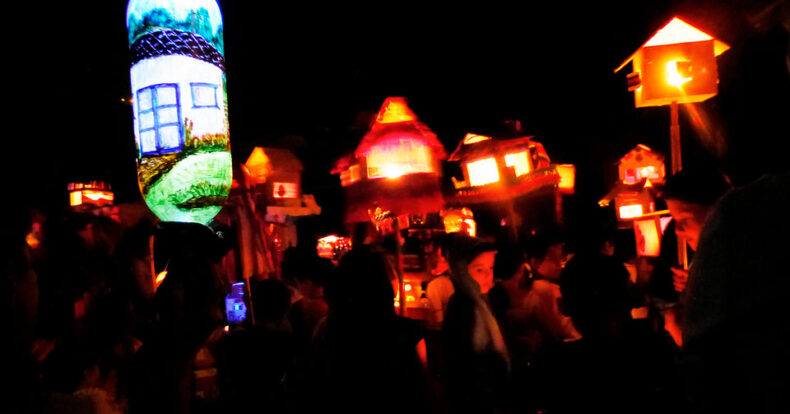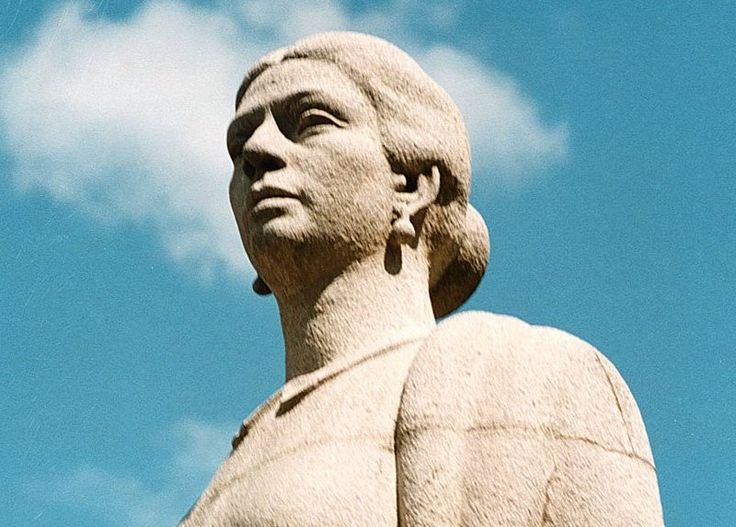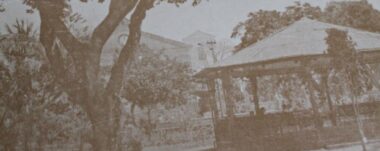Lantern parade: one more year of independence and its symbolism

Costa Rica celebrates independence, learn the history of one of the most iconic traditions of this event: the lantern parade.
The lantern parade is an activity that has become a tradition. It accompanies the commemoration of the Act of Independence that took place in Costa Rica and other Central American countries in 1821.
The tradition
The lantern parade is usually held in schools or high schools at 6:00 p.m., after or before a civic act. Students and teachers, along with their families, parade through the streets near the educational institution, accompanied by the Hymn to September 15.
Thus, the blue, white and red lanterns illuminate the streets on these patriotic dates.
Faroles (the lanters)

Each lantern represents a beacon of hope that independence brought to the country.
The lanterns are made of red, blue or white paper and can have various shapes or be decorated according to each person’s taste. Some people like to add images of Costa Rican animals, of the purple guaria, of coffee. Some lanterns are even shaped like a wagon or a coffee dripper.
At the same time that the lanterns commemorate a very important day for Costa Rica, it is an activity that highlights the creativity and ingenuity of the Ticos.
History

But why is the lantern parade held?
According to history, it was María Dolores Bedoya, one of the only women who participated in Guatemala’s independence movements, who walked the cobblestone streets of her country with a lantern in her hands on September 14, 1821.
She wanted citizens to gather in the plaza, in front of the town hall, where the provincial deputations of Guatemala, including Chiapas, Honduras and El Salvador, were meeting.
At that time, the objective of the Guatemalans was to pressure the decision to sign the Act of Independence by shouting “Viva la Patria!” and “Viva la Libertad!”, next to their lanterns, because at that time there was no electricity.
This is how the lantern parade arrives in Costa Rica, an interesting tradition that has been kept alive for more than 200 years.
What does this practice really represent?
The action of going out to the streets, with the lanterns and accompanied by the Hymn to September 15 has a symbolic meaning behind it.
In fact, María Isabel Carvajal’s study shows that in the Hymn to September 15 there are speeches related to the theme of identity, independence and patriotism.
These speeches allude to the ideal attitudes that should be adopted, such as: the defense of sovereignty, loyalty, respect for patriotic symbols, adherence to the law and the preservation of the rule of law.
How do these discourses work?
For Carvajal, discourses are inserted within cultural fields and create a belief effect that translates into an illusion shared by society.
The Hymn to September 15
The Hymn to September 15 was written in 1852 and published in 1883, that is, 60 years after the Independence of Costa Rica.
According to historian Carlos Meléndez, the circumstances of Independence were not so decisive for Costa Ricans, but they were for Central Americans. Let’s remember that, in 1821, Costa Rica belonged to the deputation of Leon Nicaragua, and what was happening in Guatemala was unknown.
In fact, it is said that, by its lyrics, the Hymn to September 15 could refer to the Independence of Central America, Costa Rica or the Heroic Deed of 1826.
Indeed, the anthem aims to unite and mold a sense of patriotic identity in Costa Ricans. In other words, the parade of lanterns accompanied by the anthem on September 15 has the function of celebrating and continuing to promote the feeling of independence for Costa Ricans, who, perhaps, did not feel it so much as their own at the time of the event.
Sensorial Sunsets
Previous article Conference: Costa Rican Independence in its Territorial and Temporal Context 1808-1823
Navigate articles




